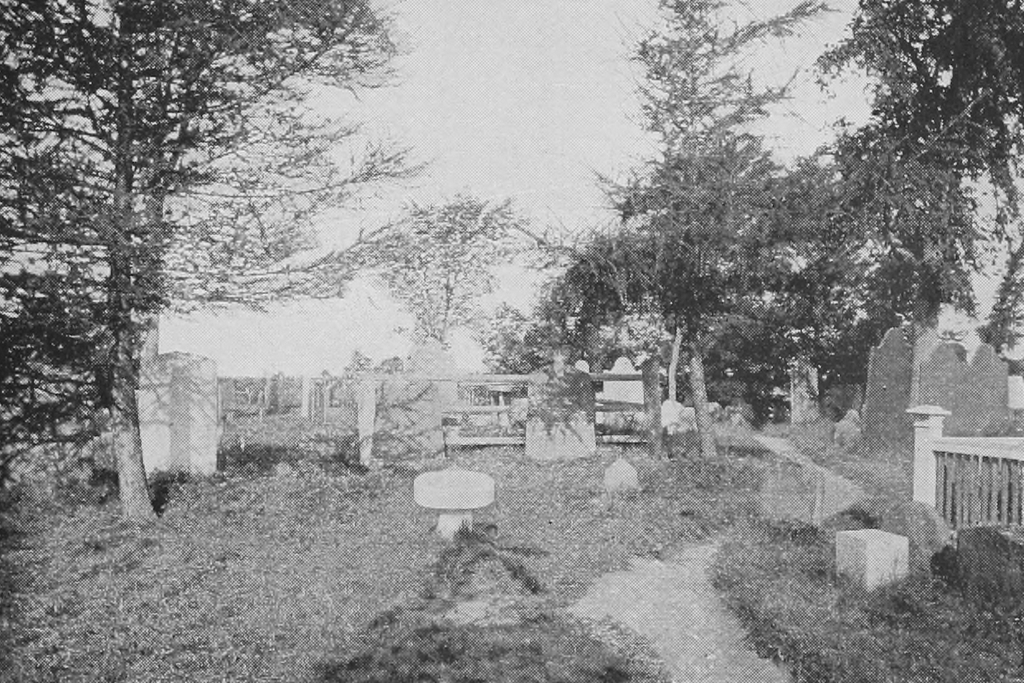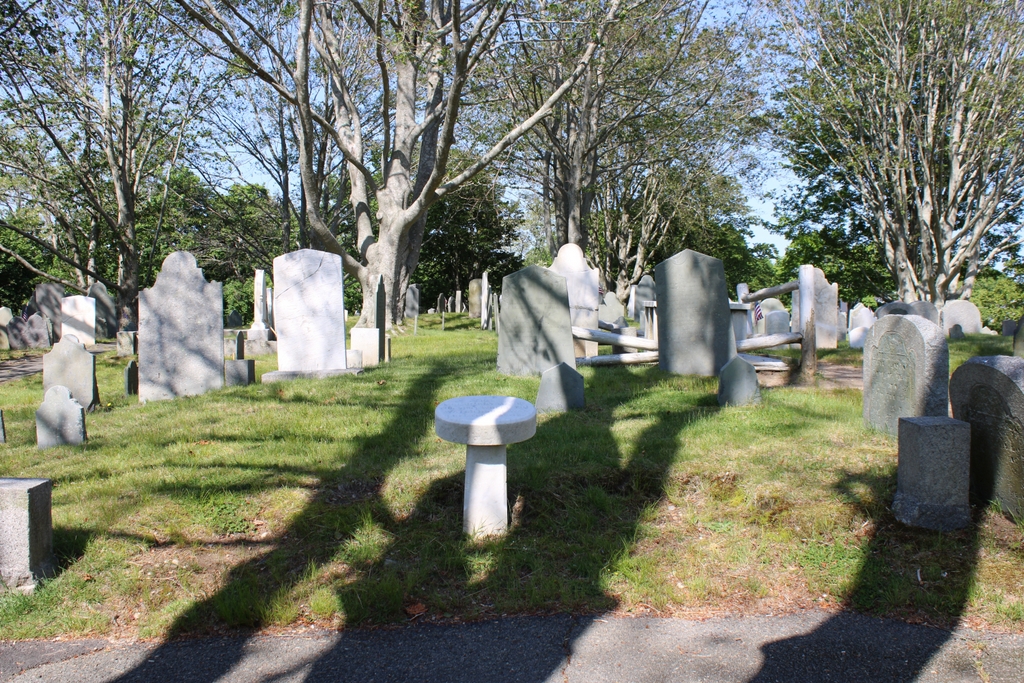The site of the colonial-era watch tower on Burial Hill in Plymouth, around 1896. Image from Guide to Historic Plymouth (1896).
The scene in 2023:
As explained in several previous posts, Burial Hill in Plymouth was the site of a 17th century fort that was constructed in 1621 by settlers who had arrived on the Mayflower a year earlier. Over the years, the defensive works here on the hill were expanded, including a brick watch tower, which was built in 1643. However, these structures were no longer needed after the end of King Philip’s War, and they were subsequently dismantled.
By 1679, the hill was in use as a graveyard, and this would continue throughout the colonial period and into the 1800s. Over time, though, burial trends in New England shifted away from traditional colonial-era graveyards, with their rows of headstones that featured skulls and other grim reminders of death. Instead, ,mid-19th century New Englanders began to prefer more park-like landscaped cemeteries, which reflected changing societal views on death and mourning.
However, even as its use as an active graveyard decreased, Burial Hill became the site of renewed interest in the early history of the Plymouth colony. A number of monuments were added here to commemorate Mayflower passengers who may or may not have actually been buried here, and there were also markers installed to mark the locations of the 17th century fortifications that once stood on the hill.
The presumed site of the old fort is marked by one such monument, although the location of the marker appears to have been based on tradition rather than on archaeological evidence. However, the site of the 1643 watch tower is more firmly established, thanks to 19th century excavations that uncovered bricks and other remnants of the tower. The 1878 book Old Plymouth: A Guide to Its Localities and Objects of Interest provides an account of the watch tower and the discovery of its remains:
A little to the north of the site of the old fort, another tablet marks the place of the brick watch tower erected in 1643. The locality of this tower is still plainly discernible by the remains of the bricks discoloring the earth in the path, and the four stone posts set in the ground mark its corners. The brick foundation is still there, about a foot below the surface, and the old hearthstone on which the Pilgrims built their watch fires, still lies where they placed it on the southerly side of the enclosure. The location of the tower was discovered several years ago in digging a grave, when the sexton came upon the foundation.
The top photo was taken about 20 years after this description was written, and it shows the site of the 1643 watch tower. In the foreground is an oval marble marker, evidently the tablet that is mentioned in the description. In the lower right corner of the photo is a low granite post, one of the four that marked the corners of the tower. The other three posts would have also been here at the time, although they are not readily visible in the photo.
Today, more than 125 years after the top photo was taken, not much has changed here at this site. Most of the gravestones appear to still be here, although some have been encased in granite in an effort to better protect them. The granite posts are also still here, as is the oval marker that explains the history of the site. There does not appear to have been any archaeological work here in the intervening years, but presumably the original brick foundation and the hearthstone are still below the surface.


